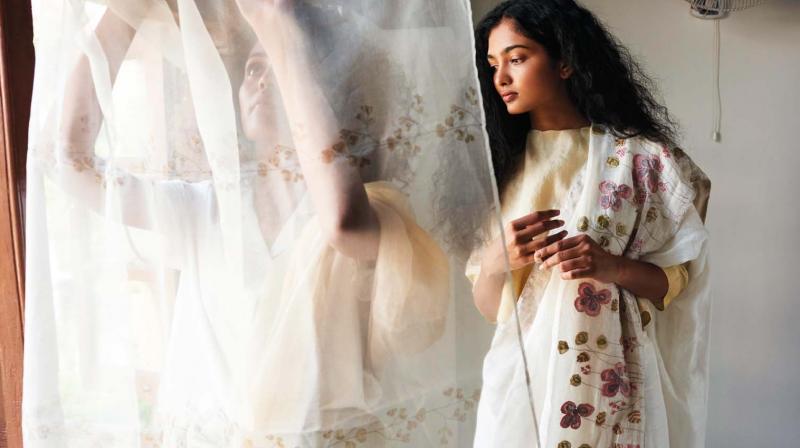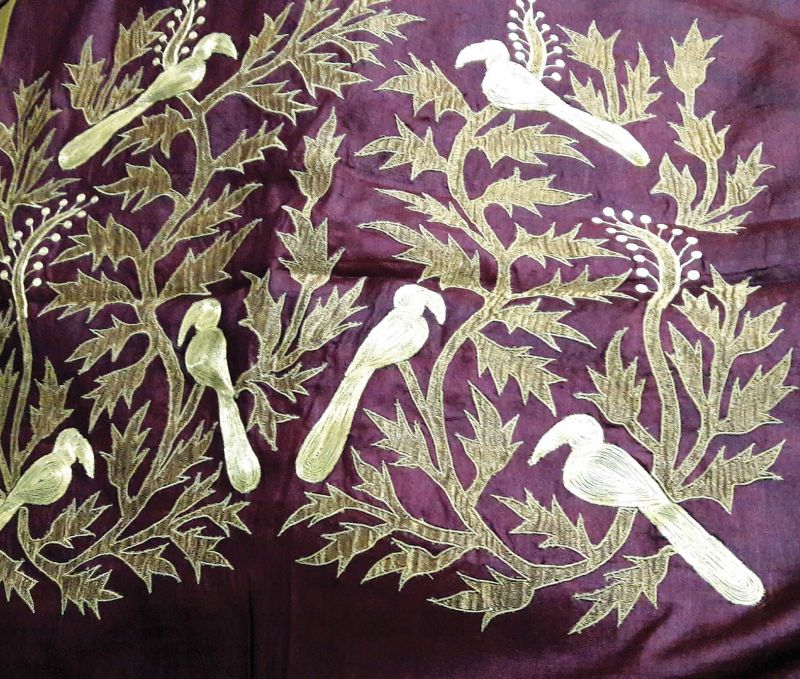Connect to Kaithari

‘Kaithari’ in Tamil and in Malayalam means ‘handwoven’ or ‘handloom’. It is no secret that India is a veritable cornucopia of textiles and crafts. Sadly it is also no secret that our handloom industry requires much encouragement in this age of fast fashion and instant gratification. It was with this intent that August 7 had been chosen to be ‘National Handloom Day’ in 2015. This was also the day that the ‘Swadeshi’ movement was launched in 1905 celebrating our local khadi and other indigenous art. Whilst most of our handlooms are crafted in our villages and small towns it’s the diligent city slickers who fight to keep handmade fabrics relevant today. We speak to three designing women - ranging in age 24 to 58 - who have translated their passion for textiles into contemporary and distinctive designs.
Thangam Mathai, Chennai
“When we were young, we wore sarees everywhere! After school and my uniform - I wore a saree to college every day.” reminisces Thangam Mathai. Thangam - the creative force behind Chennai’s renowned Mayuri boutique started her work in 1983. While her boutique continues to sell beautiful handcrafted sarees and salwar fabrics, the designing woman reflects on other changes - “We have so many options on what to wear these days. And while I am happy to have options, I am certain that there still isn’t any garment as special as the saree.”
 Thangam Mathai’s design
Thangam Mathai’s design
An ardent advocate of our handwoven textiles, Thangam works with weavers in Benares (silk-kota and cotton), Bhagalpur (tussar silk) and Bangalore (soft silk) for her sarees. Once the plain white yardage arrives she and her team of in-house artisans transform each plain canvas into a symphony of colours and crafts. “My in-house team add their own special touch with dyeing, hand-embroidery, block-printing, hand painting...while there was a definite lull in saree-wearing around five/ten years ago I am thrilled to see so many young people supporting handlooms and sarees these days with the help of social media.”
Anavila Mishra, Mumbai
The award-winning Anavila Mishra is credited with elevating the everyday saree to ‘swag’ status since her label’s inception in 2011. From the red carpet to Parliament her patrons include statement makers such as Kangana Ranaut and Sonia Gandhi. The textile genius tells us that her seemingly nondescript but impossibly elegant linen saree came to be after “…considerable thought and severe perseverance with various weaver clusters”.
Her revolutionary saree not only brought hand-woven sarees to the fore but also introduced a new facet of relaxed traditionalism to contemporary Indian fashion. On the occasion of Handloom Day her team recounts their experiences with women - whom they believe are the real backbone “Women across our regional, cultural and economic diversities are the ones who make us who we are. Be it the tribal artisan from a village in Jharkand who works in her free time to create soulful textiles, or the one sitting in West Bengal and painting the waxed linen to create water like motifs on our batik sari. The wife of the weaver who nourishes, supports and encourages the creator, the muse who never ceases to inspire…we thank you all.”
Priyanka Khokker, Jaipur-Delhi
“I am 24 years young!” giggles Priyanka, a Miranda House graduate in Geography Honours. Born and raised in the textile paradise of Jaipur, the self-taught designer tells us how she is trying to continue the rich legacy of craftsmanship with her six-month old label ‘Nakhraali’. “I work only with cottons and realised immediately that our success is all about encouraging our artisans.”
From kalamkari to hand-block printing, she says, “Only if we pay them fair wages and ensure that they have good working conditions can we continue to see these beautiful art works.” Her prêt label produces ethnic-inspired dresses, pant suits and semi-formal wear for women. “I hope to open my first retail space in Jaipur and then in Delhi soon. Another reason I work with local fabrics is that I wanted people my age to wear handmade clothes made by people not factories.”

